Kate Winslet was just another Hollywood actress — until she wasn't
Why 'Mare of Easttown' feels like a role the actress has been building toward her entire career

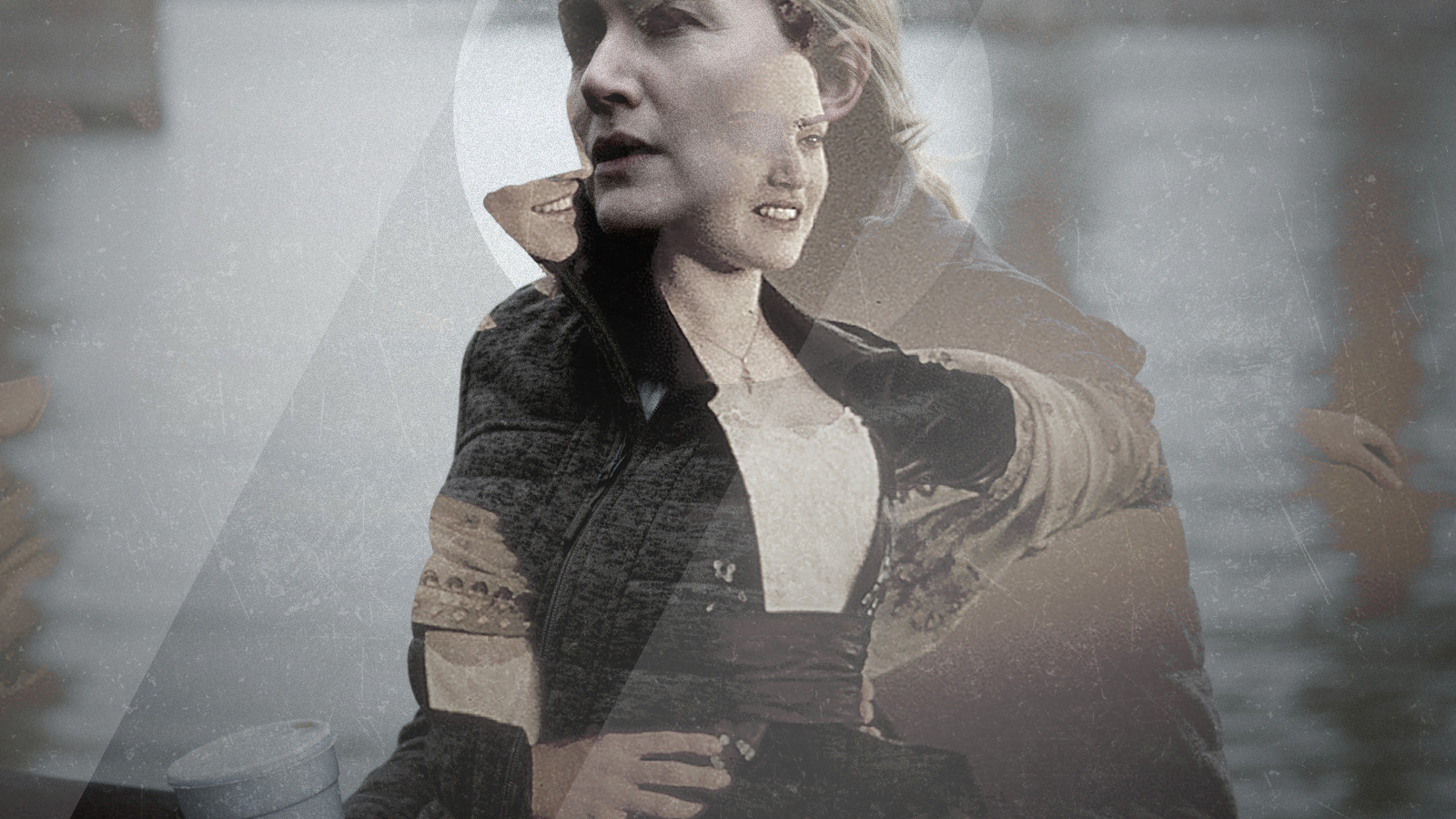
The Kate Winslet story I can't stop thinking about is the one where she almost dies.
It's 2018, and she is back on set with Titanic director James Cameron, shooting the first of the forever-forthcoming Avatar sequels. For this particular scene, Winslet has to hold her breath at the bottom of a 25-foot-deep pool for several minutes on end. "I was like, 'Yeah, I'm definitely dead,'" she later recalled thinking. "And then finally when I realized, 'Oh, I am in fact about to die,' I came up, and couldn't believe it was seven-minutes-14."
There are several parts of this story that are, as I see it, exceedingly Kate. The first is how casually she says that number, seven minutes and 14 seconds, like it isn't over three times the recommended length to microwave a Hot Pocket; even Tom Cruise, Hollywood's most famous does-his-own-stunts man, only managed to hold his breath for "over six minutes" for Mission: Impossible – Rogue Nation. There's also the amazing fact that Winslet was on set at all that day, seeing as she once told an interviewer of Cameron, "you'd have to pay me a lot of money to work with Jim again" — which is not how you go about making friends in Hollywood (though perhaps it is how you negotiate a good contract some 24 years later).
The Week
Escape your echo chamber. Get the facts behind the news, plus analysis from multiple perspectives.

Sign up for The Week's Free Newsletters
From our morning news briefing to a weekly Good News Newsletter, get the best of The Week delivered directly to your inbox.
From our morning news briefing to a weekly Good News Newsletter, get the best of The Week delivered directly to your inbox.
But the part I'm most hung up on is that Winslet, by her own admission, could have died. Should have, even! Seven minutes and 14 seconds! A few seconds more, and that really might have been it; a tragic freediving disaster, and no more Kate. There would, of course, have been shocked and saddened headlines, moving obits, and a prime spot in the following year's Oscars In Memoriam. Yet I also wonder: Would we have recognized then, in 2018, that we'd lost not just an actress far too young, but also one of our very best?
The thing you have to understand about Kate Winslet is that it wouldn't have necessarily taken something as dramatic and extreme as an on-set accident to have stopped her short of where she is today. It's easy, in the midst of excitement over the ending of HBO's Mare of Easttown, to believe that the teenage talent from Titanic would have always ended up with a long, impressive career. But Winslet's Hollywood survival story is about how she endured nearly three decades in a suffocating industry that has diminished or outright extinguished other young actresses on similar trajectories with unfair tabloid stories and malicious gossip — not to mention the limited, unambitious roles that are available to women past a certain age.
No, this Winslet was never inevitable. Only recently has this new actress come to the surface.
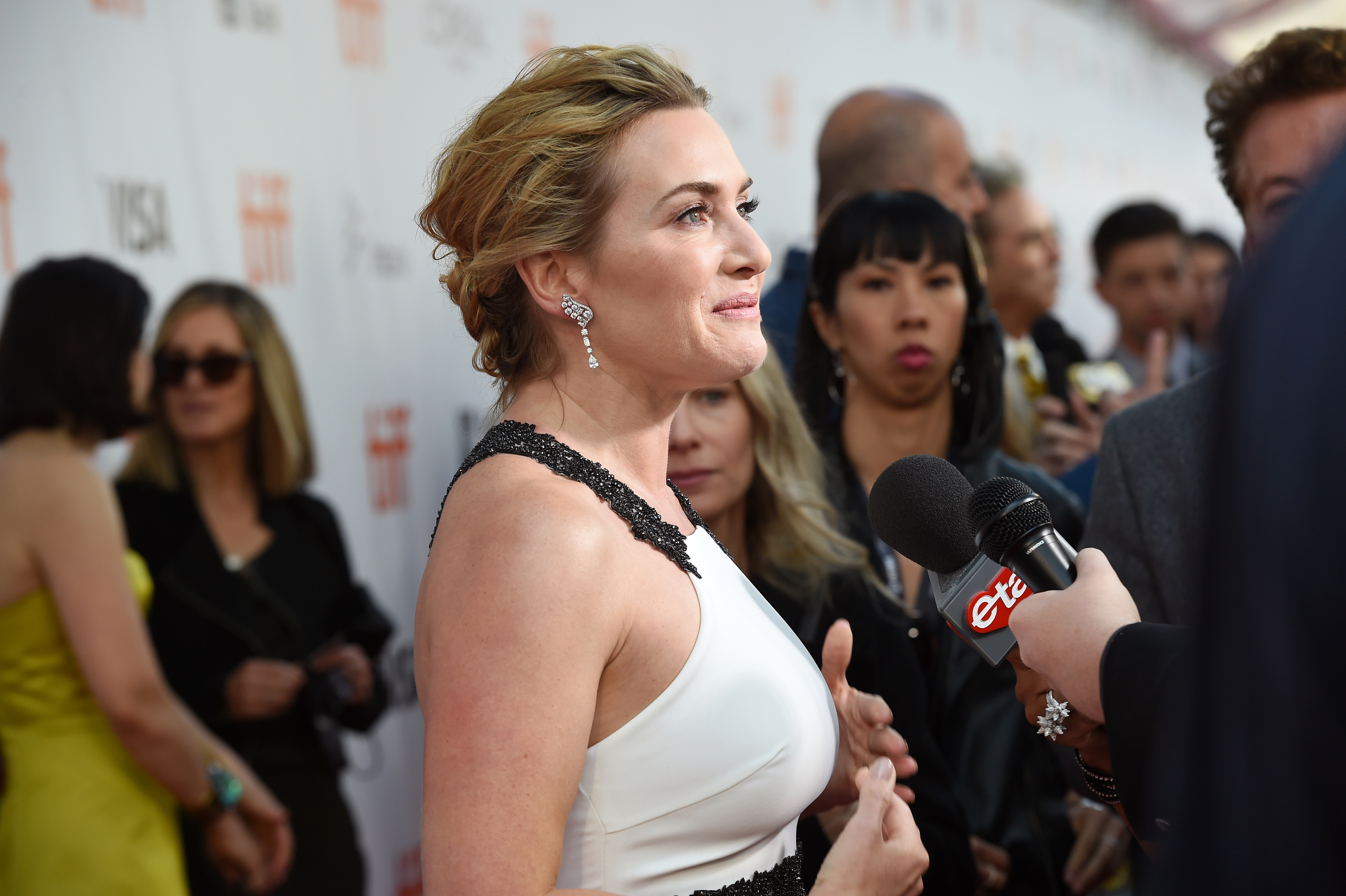
Audiences, and especially audiences not watching Mare of Easttown, might need some catching up. In 2020, The New York Times' film critics published a hotly debated list of the 25 greatest actors of the 21st century: Tilda Swinton, Julianne Moore, Viola Davis, Nicole Kidman, and Saoirse Ronan made the cut; Winslet didn't. But readers didn't exactly bemoan her exclusion when they took issue with the list; fans missed Kristen Stewart, Meryl Streep, Laura Dern, Cate Blanchett, Natalie Portman, and Regina King, but Winslet's snub seemingly ruffled no feathers. Part of that might be because she hasn't starred in any recent hits; while Winslet enjoyed a high point of critically-acclaimed films between about 2006 and 2011 (during which she won her only Academy Award, for 2008's The Reader), she hasn't been nominated for an Oscar since her darkhorse supporting actress nod for Steve Jobs in 2015 — "far, far from her best work," in The Atlantic's estimation at the time. Of her 13 live-action roles since 2013, only three are "certified fresh" on Rotten Tomatoes.
A free daily email with the biggest news stories of the day – and the best features from TheWeek.com
But if you take a step back, there's more to what's going on here than Kate Winslet making bad movies. Because even though Winslet does make bad movies sometimes, her work during the 2010s also looks a lot like a middle-aged actress doing the best with the roles that were available to her.
As Liv Tyler once complained to More, "when you're in your teens or 20s, there is an abundance of ingenue parts which are exciting to play. But at [my age], you're usually the wife or the girlfriend — a sort of second-class citizen." Winslet's career trajectory has followed just that pattern too: Starting out, she portrayed porcelain-skinned heroines, the kind who breathe heavily in the rain while standing opposite their troubled love interests: think Sense and Sensibility, Jude, Hamlet, and of course her breakout role in what was my favorite movie at age 16, Titanic.
Hollywood, though, didn't seem quite to know what to do with her. It was the tail-end of the era of heroin chic, and open season on ridiculing Winslet's body — something even her director, Cameron, participated in, nicknaming her "Kate Weighs-a-Lot." Joan Rivers had a joke about how "if she just lost 5 pounds, Leo would've been able to fit on the raft." One needlessly cruel profile in Vogue claimed Winslet's "skin is still thinner than her body."
Winslet, for her part, didn't seem to know quite what to do with Hollywood, either. Understandably, she detoured away from roles that would've kept her in the heat of the spotlight; in the aftermath of Titanic's success, she gravitated toward smaller projects, like Hideous Kinky (1998), the Jane Campion film Holy Smoke! (1999), and, eventually, an against-type part as the proto-Manic Pixie Dream Girl Clementine in Eternal Sunshine of the Spotless Mind (2004). "There was tremendous pressure on me to do something 'big,' but I ducked it all. I had to. If I hadn't, I would have burned out by the age of 25," she later explained to The Guardian in a 2004 profile that nevertheless found cause to observe that she is "not beautiful."
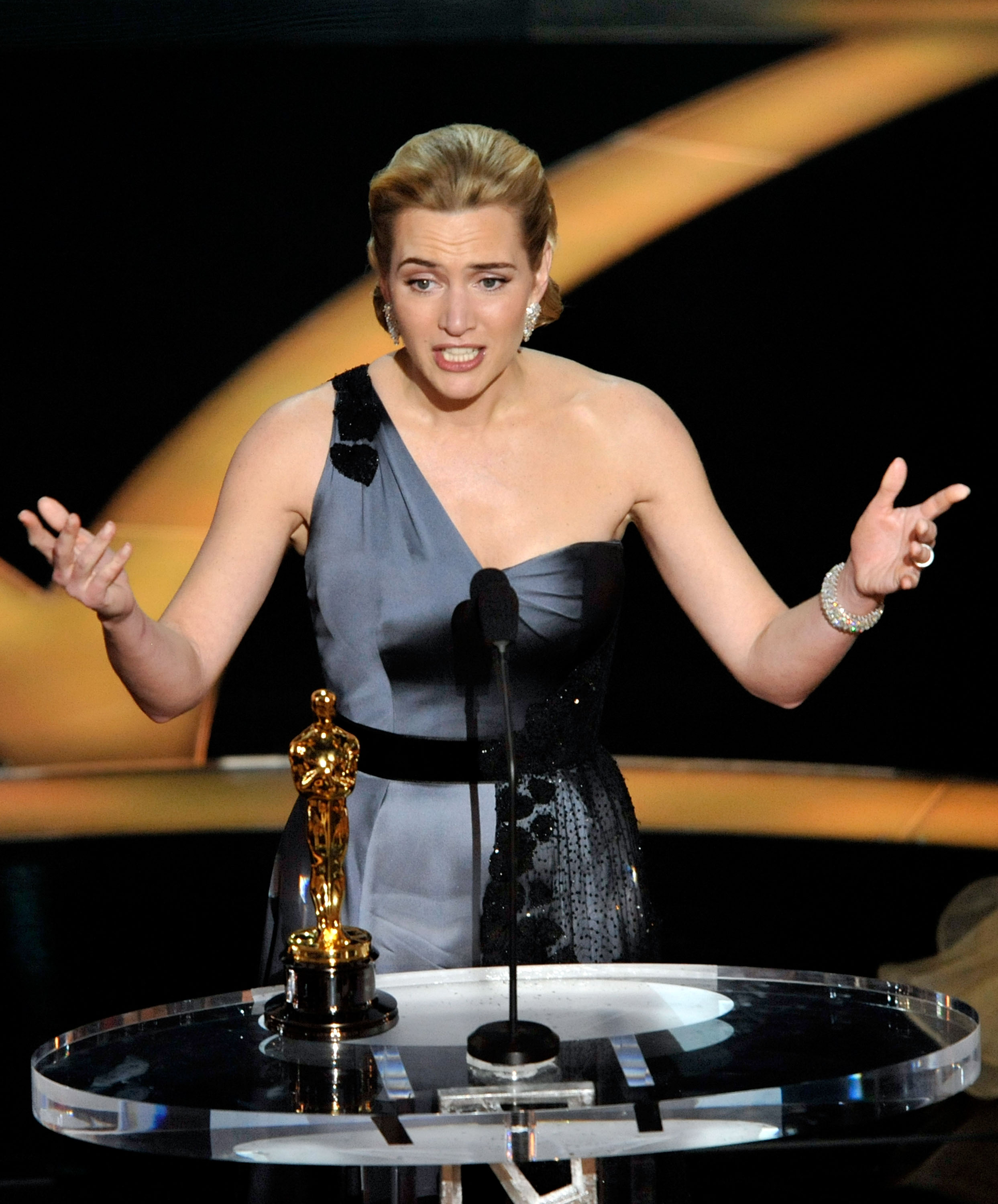
Winslet's "wife or the girlfriend" years began right on Hollywood's schedule, as she turned 30. They brought with them, though, critical success, including a Best Actress nomination for playing the not-hot mom in the 2006 movie Little Children, and Winslet's only win to date, as the older Nazi seductress in The Reader, in 2008. Winslet was also doing more than just seeking out awards bait; she began to actively wrestle with the rote, "middle-aged" roles available to her. Arguably one of her best performances came in the HBO miniseries Mildred Pierce in 2011, when her raw, empathetic portrayal of a divorced mother on the brink breathed previously unexplored complexity into the story's stereotypes about repressed housewives.
Winslet, during this period, also started picking up roles as the career woman. Often these parts were uninspiring, like in 2011's Contagion, when she played a single-minded epidemiologist who's literally killed by her drive to find a cure for the virus. But there are also movies like 2015's A Little Chaos, which might have seemed like a return to form for then-39-year-old Winslet, being, as it was, a romantic period piece. Instead, Winslet was seasoned, rougher around the edges. Her character's career came first, and it involved holding her own in a man's world — yet not at the expense of her own desires as a woman, either.
That was six years ago. Winslet is now 45, and what's seemingly available to her in Hollywood has only narrowed further. As The Washington Post once calculated, "When a female actor reaches 40, she loses access to about three-quarters of the leading film roles for women." All that's left for an actress who still wants to work at this age are a lot of rotten tomatoes.
In Winslet's "bad" movies, though, she's often still cited as a highlight. Critics panned the 2017 movie Wonder Wheel, but it offered what is maybe the first glimpse of the version of Winslet who's earning raves today. In the film, she plays a burned-out waitress, Ginny, with such tenderness that it carries the emotional weight of the entire story. Winslet described having an "absolute determination to make her my own character and not a cliched version of the woman who's neurotic or drinks too much" — suggesting perhaps a more generous interpretation of the part than was even afforded by its writer, Woody Allen.
Yet it's obvious that over roughly the past decade, Winslet has not exactly been landing roles that allow her to play to her highest caliber. In a recent conversation with Vanity Fair, she mused about how the 2020 lesbian romance Ammonite in particular helped her to realize "we're so conditioned to experiencing the traditional setups around romantic ideals onscreen." She added that it's made her reconsider her place in re-enforcing those stereotypes in her previous work: "Was I automatically just letting myself be a little lady being wooed? It made me feel mad." Asked if she's held back in the past, she admitted to another interviewer, "Yes. A little bit."
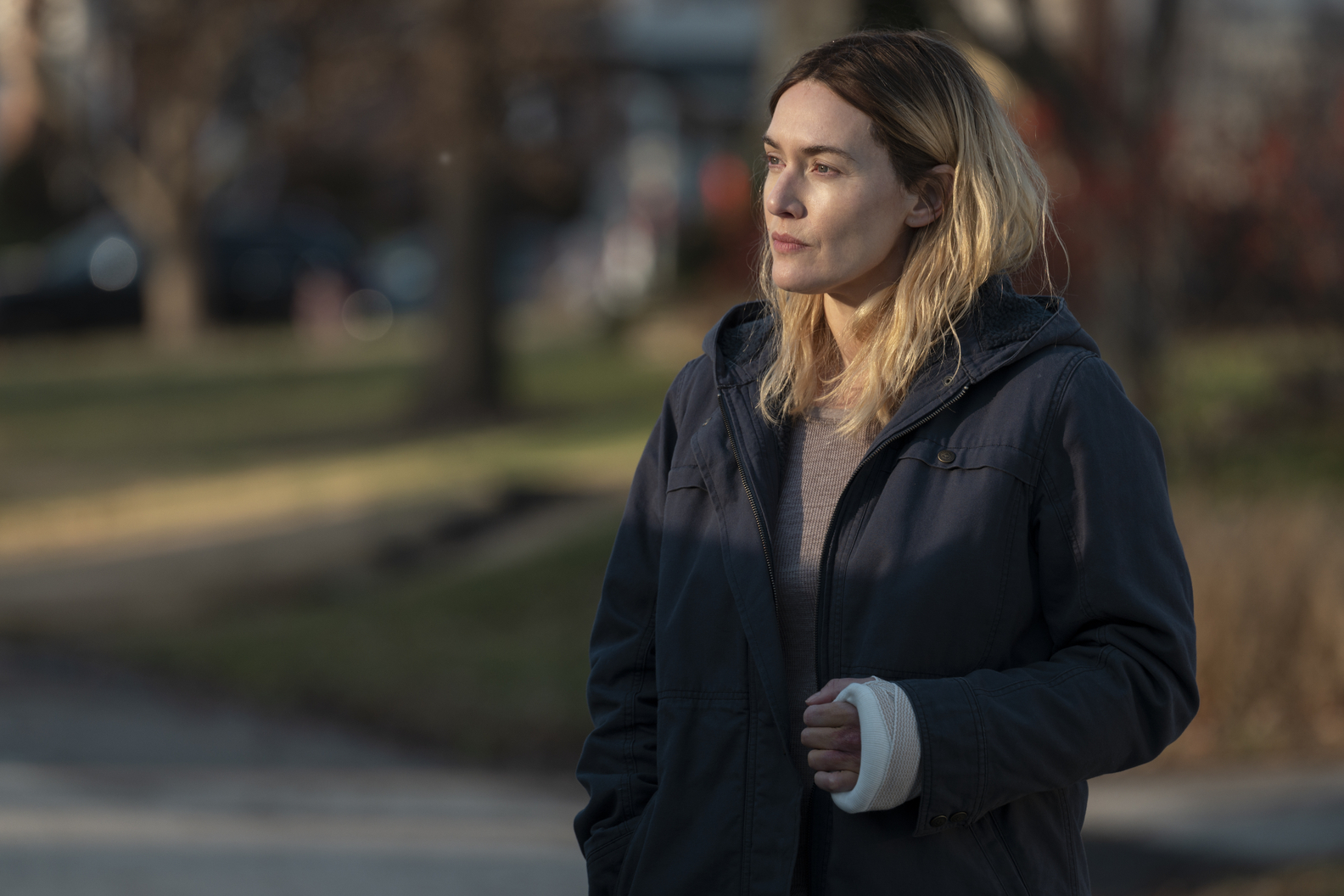
Detective Mare Sheehan, then, is exactly the kind of character Winslet has been waiting for. Television has always served her well; for someone who so deeply adopts her characters as an extension of herself, it gives her room to explore them over the course of hours. And Mare is worthy of that exploration: she's brusque, but no hardboiled cop stereotype; she's a "hot mess" who only looks in the mirror twice a day, but who isn't without her own vulnerabilities; she's a mother (for Mare of Easttown is, fundamentally, a story about mothers) and grandmother but also a person with a sexuality, who can't help but smile at an unexpected compliment. Winslet's efforts to make Mare a fully lived-in person even, apparently, ticked off the brass at certain points. "HBO said, 'Does Kate have to look so …' And I said, 'What, like s--t? Yes. Kate does have to look like s--t,'" Winslet recalled to The Times.
More importantly, she's getting recognized for it. Winslet's name briefly trended on the Monday morning after Mare of Easttown's penultimate episode. That's no insignificant thing, especially if it means future casting directors will think of Winslet as one of our truly brilliant actresses, not just someone who also said yes to Collateral Beauty.
Mare of Easttown presents a turning point for Winslet off-camera, too, now that she can be a sort of industry mentor. "I'm not on some crusade, a hundred percent not," she told Vanity Fair, before launching into a story about how she protectively stayed on set with the young actress who plays her daughter in the series, in order to give her reassurance during a sex scene shot by male camera operators.
That doesn't mean the scars of her upbringing in the industry don't linger. She says she "hates" talking about her weight, but also frequently offers unsolicited judgments of her body in interviews. "I don't like having to squeeze my hot-and-bothered mum-on-the-school-run body randomly into a red carpet dress that I'm never going to wear again," she told Vanity Fair last fall. Even discussing her death-defying performance for Avatar 2, Winslet slipped in a self-deprecating joke about "squeezing my sausage-y self into this freediving wetsuit." One reporter who visited Winslet on the set of Ammonite observed the actress quipping to the director of photography, "Are you getting my double chins?"
Sure enough, all these years later, Winslet — now a 45-year-old mother of three, and well-known advocate against photo retouching — continues to be a victim of the media's obsession with her body. In an article for The Times published just this week, the writer describes how "some" are "taken aback by the actress' … chunkiness" in Mare of Easttown, then relishes an anecdote about Winslet once ordering "a caramelized apple tart ... as if to emphasize that she would never be insanely thin."
Winslet, though, has stuck through it, despite the cruel media, the bad reviews, the uninspiring scripts, the tactless journalists. Rather than letting herself be diminished by the narrow opportunities available to older actresses, she's now finding her best fodder yet. And if there is any justice, Mare of Easttown ought to be a turning point, a reminder that Kate Winslet is still here, she's still brilliant, and she's not going away.
That reminds me: There is another story about Winslet I love, about how she takes a souvenir from every set she's worked on. A sink from Mildred Pierce, the curtains from the cottage in The Holiday, a table from All the King's Men. How fitting, then, that now, at this juncture, she deputized herself with Mare Sheehan's own police badge. "I know this sounds silly," she confessed to The Times, "but I felt I earned this badge."
There is relief in the way she says it, like she's come up for air.
Jeva Lange was the executive editor at TheWeek.com. She formerly served as The Week's deputy editor and culture critic. She is also a contributor to Screen Slate, and her writing has appeared in The New York Daily News, The Awl, Vice, and Gothamist, among other publications. Jeva lives in New York City. Follow her on Twitter.
-
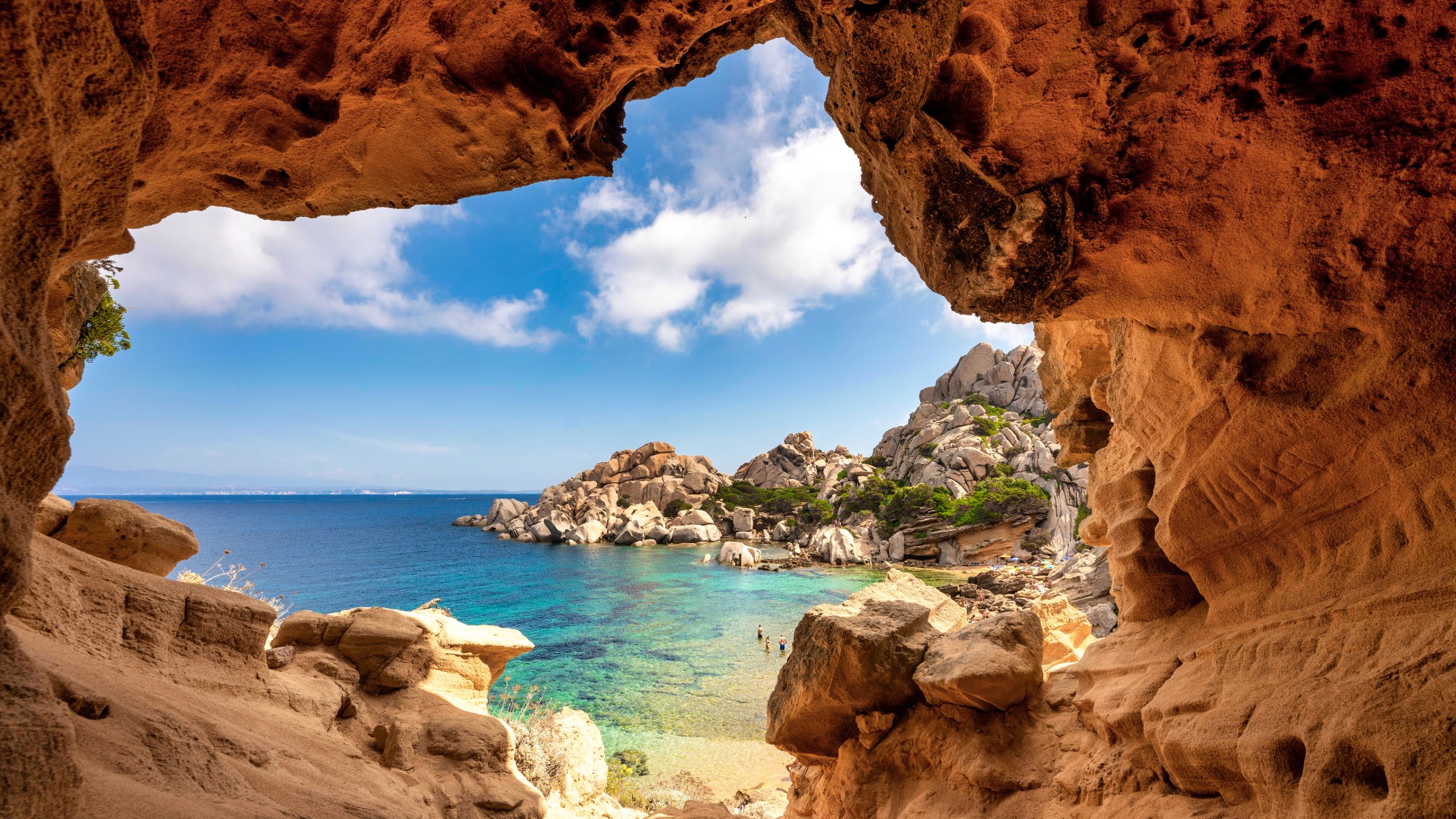 8 incredible destinations to visit in 2026
8 incredible destinations to visit in 2026The Week Recommends Now is the time to explore Botswana, Mongolia and Sardinia
-
 Wave of cancellations prompt Kennedy Center turmoil
Wave of cancellations prompt Kennedy Center turmoilIN THE SPOTLIGHT Accusations and allegations fly as artists begin backing off their regularly scheduled appearances
-
 The dark side of how kids are using AI
The dark side of how kids are using AIUnder the Radar Chatbots have become places where children ‘talk about violence, explore romantic or sexual roleplay, and seek advice when no adult is watching’
